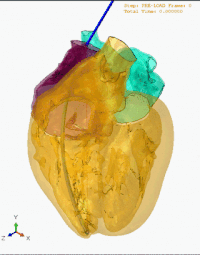(Medical Science)

The M.D. is scanning the array of monitors in front of him. On each screen is a detailed, three-dimensional model of a human heart, each one slightly different, representing the hearts of his diverse patient population. These aren't just any models—they're digital replicas of actual patients' organs, created using data from medical exams and wearable devices. This revolutionary technology, known as VirtualOrgans, allows the M.D. and his team to run an infinite number of experiments, tailoring treatments with unprecedented precision.
The concept of digital twins in medicine has been around for years. Now, with VirtualOrgans, each patient has a digital counterpart that reflects the current state of his or her health down to the minutest detail.
At the moment, the M.D. is treating Joe whose heart shows the irregular rhythm that has eluded effective treatment. Running VirtualOrgans simulations on his cardiac patient, the M.D. finally settles on
the calcium channel blocker, which is by far the most promising option. Joe agrees.
With VirtualOrgans, doctors can offer personalized care with a level of precision and confidence previously unimaginable. And for patients like Joe, it means a new lease on life, backed by the power of infinite experimentation and boundless hope.
Author: renqiulan
|
